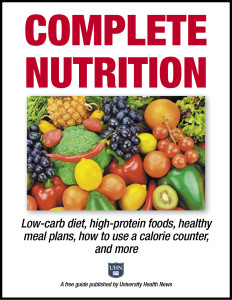The Circle of Willis and Its Role in Ischemic Strokes
The circle of Willis is a continuous loop of arteries in the brain that provides collateral circulation. When you turn your head from side-to-side or up and down, the arteries in your neck stretch and flex. In the process, they may become compressed, which restricts blood flow. You don’t faint when this happens, because the circle of Willis provides collateral blood flow. Likewise, when you turn your head as far as possible to one side, one of your internal carotid arteries is compressed. Without the circle of Willis, this would stop blood flow to one side of your brain. However, the circle of Willis ensures that blood from the other internal carotid artery is distributed throughout the brain.
Collateral circulation also provides an alternate path for blood to reach any part of the brain, should one of the major arteries become obstructed. If an internal carotid artery is blocked, for example, the other major arteries partly compensate for the loss of blood flow. Other cerebral arteries may also connect, providing collateral circulation to other parts of the brain. This varies among individuals, however. In fact, a complete circle of Willis may occur in only 40 percent of people. The more collateral circulation you have, the better your chance of surviving a stroke without severe deficits.
Eat Right, Starting Now!
Download this expert FREE guide, Complete Nutrition: Low-carb diet, high-protein foods, healthy meal plans, how to use a calorie counter, and more.
Create healthy meal plans and discover the Superfoods that can transform your plate into a passport to better health.
Its Role In Ischemic Stroke
Ischemic strokes are generally the result of a blockage caused by cardiovascular disease (atherosclerosis). It would be reasonable to assume that a stroke will occur if the plaque obstructs blood flow, but that is not always the case, thanks to the circle of Willis.
Atherosclerosis
Plaques develop in three phases. The first is called “initiation.” The lining of arteries (endothelium) is a smooth, inert surface that blood flows across. High cholesterol levels, high blood pressure, toxins in cigarette smoke, and other factors can damage the endothelium and stimulate the development of atherosclerosis.
Injured endothelial cells interact with white blood cells, which are part of the body’s defense against infectious organisms such as bacteria. White blood cells attack the invaders, help heal the injuries, and rid the body of cells that may have been irreparably injured or killed. This process, called inflammation, paves the way for the growth of new cells and tissues to replace those that were killed or damaged. Certain white blood cells help ensure that this process occurs in an orderly manner. But to get to the injury they must leave the blood and enter the tissues, which requires crossing the endothelium. Injured endothelium responds by becoming sticky to attract white blood cells.
Plaque Growth
Cholesterol is a type of fat made by your liver and absorbed from digested food. Your body needs only a tiny amount of cholesterol to make hormones, bile, and vitamin D. If unused cholesterol is not excreted, the body deposits it on artery walls.
Cholesterol molecules are wrapped in protein-covered particles that move easily through the bloodstream. These are called lipoproteins. Low-density lipoproteins (LDL) and high-density lipoproteins (HDL) contain high concentrations of cholesterol, and chylomicrons are another dangerous fat.
LDL, VLDL, and chylomicrons carry fats from the gut and the liver throughout your body to meet the cells’ metabolic needs. HDL carries fats to the liver, which prepares it for removal from the body.
When the different lipoproteins exist in proper proportion, they are not a health risk. However, when total cholesterol or LDL-cholesterol levels rise, or the amount of HDL-cholesterol drops, the body starts depositing cholesterol in the arteries. Although triglycerides do not accumulate in arteries like cholesterol does, abnormally high levels of triglycerides are also associated with an increased risk of stroke or heart attack.
Plaque Maturation
At least four things begin to happen as the plaque enlarges. First, some of the white blood cells inside the fatty streak begin to die, forming what doctors call a “necrotic core.” Second, the muscle cells of the artery wall begin to grow over the necrotic core. Third, blood cells called platelets begin to stick to the injured endothelium and facilitate the formation of small blood clots on the surface of the plaque. Platelets are an essential component of blood clotting in arteries. Normally, they circulate without doing much. But when they sense an injury that causes bleeding, they clump together to stop it by forming a plug. They also present a sticky surface that attracts actual blood clots formed from circulating proteins. As the plaque enlarges, platelets and blood clots get mixed in with the cells covering the necrotic core to form a fibrous cap. The cap is delicate and prone to rupture, releasing its contents into the bloodstream. This is a highly dangerous situation.
Plaque Hardens
In the fourth stage of plaque development, certain cells in the slowly developing plaque deposit calcium inside the plaque—a process called “hardening of the arteries.
In a study of more than 3,600 patients with carotid artery disease, but no symptoms of stroke, only nine percent developed total blockages, and only one patient had a stroke. Three more developed a stroke about three years later. Why? Because collateral circulation through the circle of Willis helped maintain blood flow through the cerebrum, even when one or both carotid arteries were blocked.
The post The Circle of Willis and Its Role in Ischemic Strokes appeared first on University Health News.
Read Original Article: The Circle of Willis and Its Role in Ischemic Strokes »
Powered by WPeMatico


